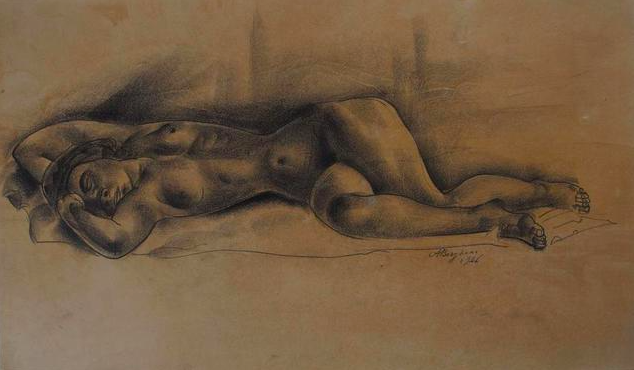 The exhibition is one possible version of art history based on the collection of Tartu Art Museum, which gives a bird’s-eye view of the changes that took place in Tartu and Estonian art in the 19th and 20th centuries.
The exhibition is one possible version of art history based on the collection of Tartu Art Museum, which gives a bird’s-eye view of the changes that took place in Tartu and Estonian art in the 19th and 20th centuries.
The creation and legendary works by many artists that introduce the excellent art collection of the museum are on display.
As Tartu Art Museum is short of permanent exhibition space, it begins to compile longer-lasting thorough overviews of Estonian art history based on the museum’s collection. The viewpoint of every longer-lasting exhibition depends on the choices of the curator of the specific exhibition. The curator of the first exhibition, „The river flows through here… Chapters of Tartu’s art history”, is Tiiu Talvistu, the long-term curator and art history expert of Tartu Art Museum, who has researched the development of Tartu art and introduced it to the public for decades. The whole exhibition has been translated into English and Russian.
The longer-lasting exhibitions compiled exclusively from the collections of Tartu Art Museum start to take place from 2016. It is an exhibition-policy related decision to introduce the museum’s own collections to the wide museum audience. The first exhibition focuses on the history of visual arts in Tartu during almost two centuries, following the alterations of art through the prism of changes in drawing as “the mother of all arts”.
The artists of the new century’s Young Estonia generation tried to demolish this academic canon, looking for contact with the era’s modern art. Several artists of the generation – Mägi, Vabbe, Starkopf and others – laid the basis for the brightest chapter in Tartu art history, art school Pallas. The basis of the teaching there was a strong study of nature, which was again based on drawing, but the ideals and exemplars of the creation of Pallas students were very varied.
The social realist art canon of Stalin times turned back to the academism of the 19th century, reduced the artistic freedom and made the boundaries rigid. The avant-garde Tartu community and other artists started to widen the art scene again in the 1960s. They were the last to obtain higher art education in Tartu State Art Institute. The following developments in Tartu art life were already connected to the Art Cabinet, which worked at the University of Tartu, led by Kaljo Põllu and Andrus Kasemaa, and where the teaching was free of academic conventions. The changes, which have taken place in the city’s art life since 1988, will be focused on in the museum’s exhibition series „Tartu 88”.
The works of the following artists are displayed: Baltic German artists Mathias Hagen, Julie Wilhelmine Hagen-Schwarz, Woldemar Friedrich Krüger, Karl August Senff, artists related to Young Estonia – Konrad Mägi, Kristjan Raud, Nikolai Triik, Pallas students Eerik Haamer, Andrus Johani, Elmar Kits, Endel Kõks, Kaarel Liimand, Karin Luts, Lepo Mikko, Karl Pärsimäe, Aleksander Vardi, Tartu community members Valve Janov, Kaja Kärner, Lembit Saarts, Ülo Sooster, artists related to the Art Cabinet at the University of Tartu – Andrus Kasemaa, Miljard Kilk, Ilmar Kruusamäe, Kaljo Põllu, Enn Tegova and many others.
An educational programme for children and pupils of all ages accompanies the exhibition. Depending on the age, a short art history course can be taken, various assignments fulfilled in the exhibition hall, or “reading” of the art learnt, getting to know one work of art thoroughly. The audience is welcome to participate in the public guided tours, companies and working teams can order excursions to the exhibition.
The exhibition was compiled by Tiiu Talvistu, designed by Mari Kurismaa, graphic design is by Mari Kaljuste.
The exhibition team: Nele Ambos, Rael Artel, Karl Feigenbaum, Mare Joonsalu, Margus Joonsalu, Heiti Kulmar, Jaanika Kuznetsova, Kadri Märgi, Sten Ojavee, Julia Polujanenkova, Kristel Sibul, Peeter Talvistu, Ago Teedema.
We thank the Art Museum of the University of Tartu, the Cultural Endowment of Estonia, and the display and decoration design students of Tartu Art School for their help and support.
Tartu Art Museum is open on Wednesday, Friday-Sunday at 11a.m. – 6 p.m., Thursdays on 11 a.m. – 9 p.m.
























